Today, I am publishing this post in memory of Abraham Goldstein of Allentown, Pennsylvania. This is my post to him on the 75th anniversary of his death in the historic Battle of Saint-Lô.
ABRAHAM GOLDSTEIN
Born: Allentown, Pennsylvania, 1907
H&W: 5’8” 185 lbs.
S/N: 33833739
Conscripted: November 15, 1943
Unit: F Company, 2nd Battalion, 115th Infantry Regiment, 29th Infantry Division
Resting Place: Plot H, Row 1, Grave 24, Normandy American Cemetery and Memorial, Colleville-sur-Mer, France
Abraham's family
To get a feel for who Abraham was, it's important to have a mental picture of his family. Abraham's ancestors were from a region called Bessarabia. Today it is located in Moldova. When Abraham's grandparents and parents lived there, it was part of Russia.
In 1903, after violent antisemitic attacks called the "Kishinev pogrom", a 5'3", black-haired, blue-eyed, 23 year-old man named Isaac Goldstein and his 18 year-old wife, Sadie, fled their home in Bessarabian Russia. They came to America and settled down in Allentown, Pennsylvania.
In the early part of the 20th century, Allentown was a booming industrial city. There, the young couple was welcomed by Isaac's 37 year-old brother Joseph, and Joseph's wife Sarah. Joseph was a tailor and scrap iron dealer. Joseph had immigrated to America in 1885 at age 20 and opened his own business. Isaac did like his brother: he opened his own tailoring shop, where he made and altered clothes, and bought used clothing for resale.
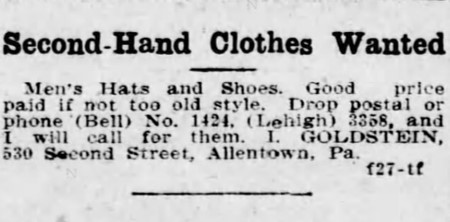
A small ad in Allentown's newspaper, The Morning Call, for Isaac's tailor shop.
Life was difficult for Isaac and Sadie Goldstein. Isaac had scoliosis and was partially paralyzed on his right side, but the Goldsteins worked hard, learned English, saved their money, bought their own home and raised their family. In 1907 Isaac and Sadie welcomed their first child into the world, their son Abraham.
Isaac Goldstein, Abraham's father
In 1913, at the age of 6, Abraham accidentally started a fire inside his home, which his father, Isaac, put out by smothering it with a rug. This incident left Abraham's father with serious burns on his hand.
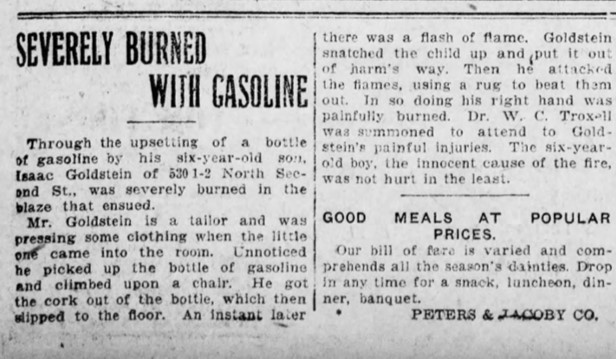
Segment from an article in The Allentown Leader describing the events, November 1st, 1913.
In a time when automobiles were still a rather new invention, Isaac Goldstein was in a serious accident. The newspapers stated that it was due to a misunderstanding of the signals. In the end, both cars were destroyed and six people were injured.
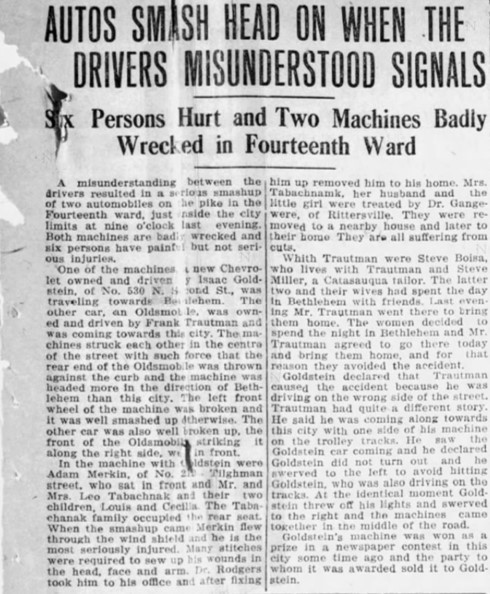
A newspaper article published on Abraham's tenth birthday, telling the story Isaac's car crash.
In 1922, Abraham's father was the first man in his community to be arrested for "Bootlegging." Isaac ended up pleading guilty. He was sentenced to six months in jail and fined $100, which today would be worth nearly $1,300. As a side note, it seems highly unlikely that Isaac was a bootlegger/moonshiner or any kind of serious criminal. My feeling is that he, like everyone else at the time, was trying to hustle a dollar to feed his family. After all, the newspaper does state that is was only a quart of whisky, which would equal one large bottle. As it was the beginning of Prohibition, the local authorities probably used Isaac's case to set an example for any future distributors of the illicit substance, to show them that the law was serious and shouldn't be broken. Unfortunately, the example was made with Isaac.
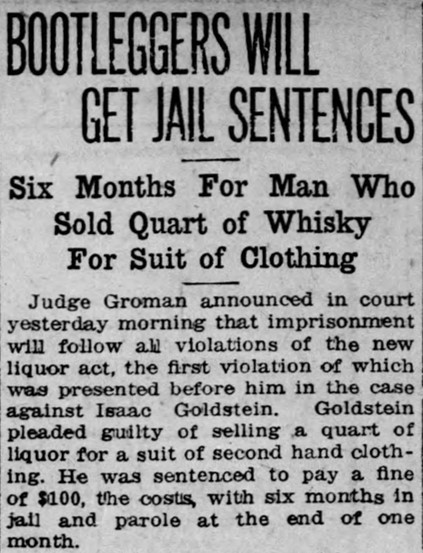
Despite the ups and downs of life in Allentown, Isaac Goldstein remained a loyal citizen of the town for 51 years. He raised his family there, and gave them all a good start in life. And, also, to the credit of this man who had come to America as a young Russian immigrant, he and his wife Sadie, gave their first-born son to America and their second son also served the country. The Goldsteins of Allentown were good people, hard workers, people of faith and proud Americans.

Allentown, ca.1920
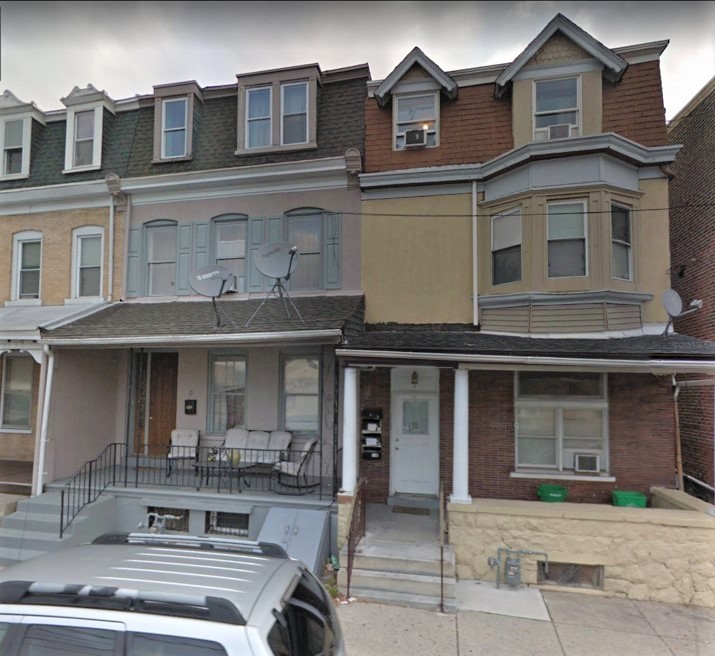
On the left is Abraham's childhood home (Google Earth, photo from 2017).
Growing up in Allentown
On the first day of 1907, Abraham Goldstein, named after his grandfather, entered this world. He grew up at 35 N, 2nd Street in Allentown. His birth was followed by his sisters Mollie, Adele and Etta, and his brother Samuel, who was called Sanford. All the Goldstein children attended William Allen High School. Abraham graduated in the class of 1924.
Abraham was a quiet young man, but people liked him very much. A lover of music, Abraham began playing the violin as a child. He was very talented at it and was already performing publicly by the age of 12. His reputation as a violinist was even mentioned in his High School yearbook biography.
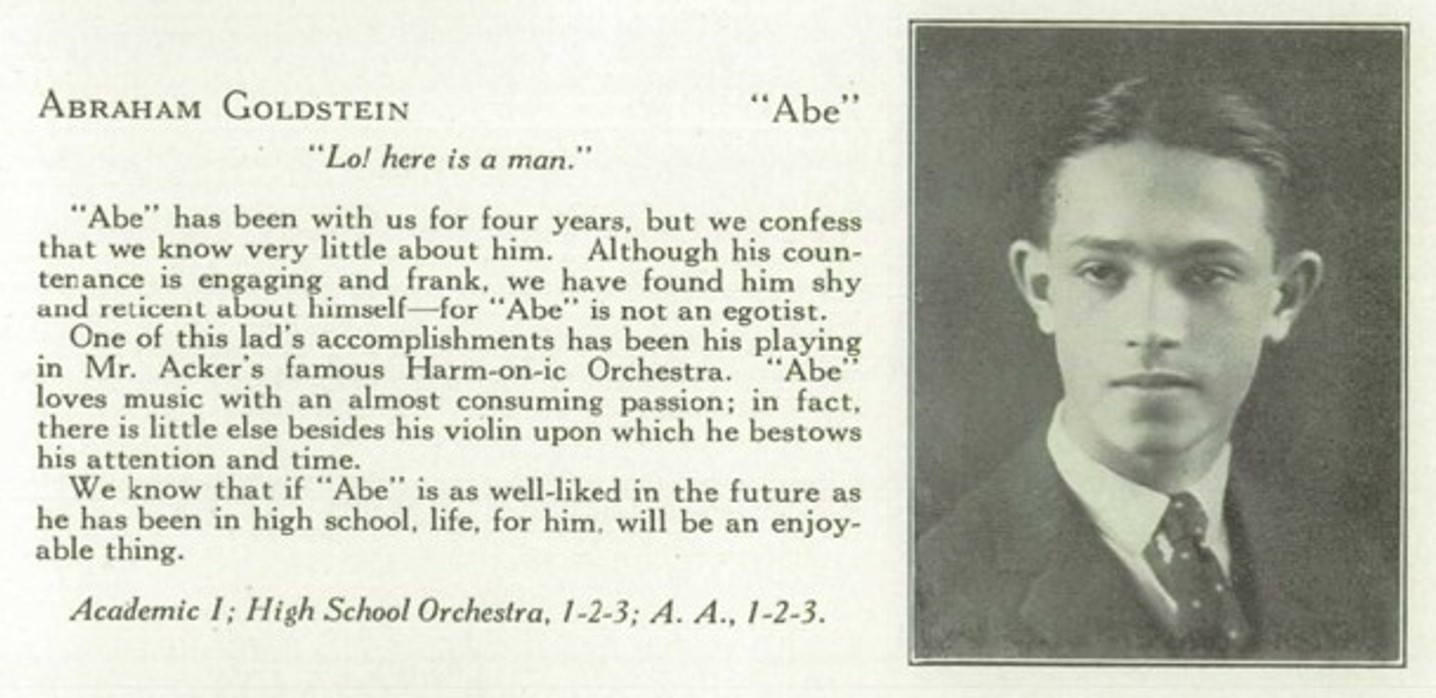
Abraham's High School yearbook biography.
Abraham was a member of Temple Beth El, a Conservative Jewish Synagogue, founded in 1929, and located in a private home converted into a Temple, on the corner of 12th & Walnut Street. Abraham's Rabbis would have been Rabbi Matthew S. Rosen, Rabbi Harry W. Katchen and Rabbi William Greenburg.
Before the war
After high school, Abraham attended Temple University where he majored in pharmaceutical studies. After a year at Temple, he returned to Allentown and became a manager in a haberdashery called Eugene and Jacobs.

"Allentown's Leading Haberdashery!" A small newspaper ad for the shop where Abraham worked as a manager.
As a young man, Abraham met a lovely brunette named Lena Buchman, though she went by the name "Lee." She was a graduate of Easton Area High School. Her parents had also fled from the Bessarabian Region of Russia around the same time as Isaac and Sadie. Lee had grown up in Easton, Pennsylvania, but moved to Allentown. She loved to play the piano, and even performed in front of audiences. Her high school classmates described her as being rather quiet, but she sure won over Abraham's heart. On June 24, 1933, they got married.
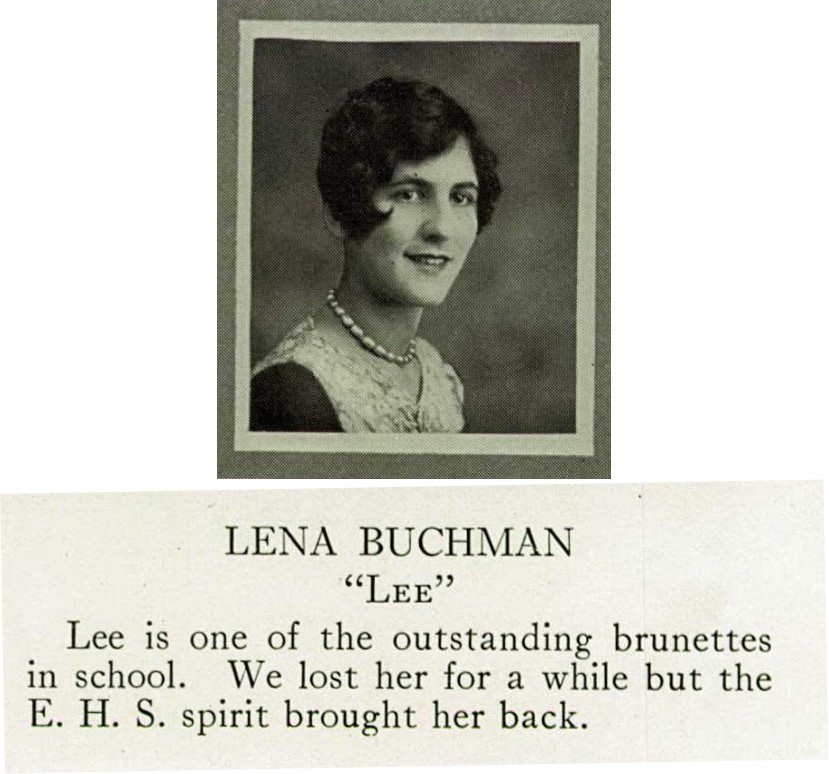
Lee's Senior Class Yearbook description and picture.

These are two articles in the local newspaper announcing their engagement.
Easton, ca. 1940.
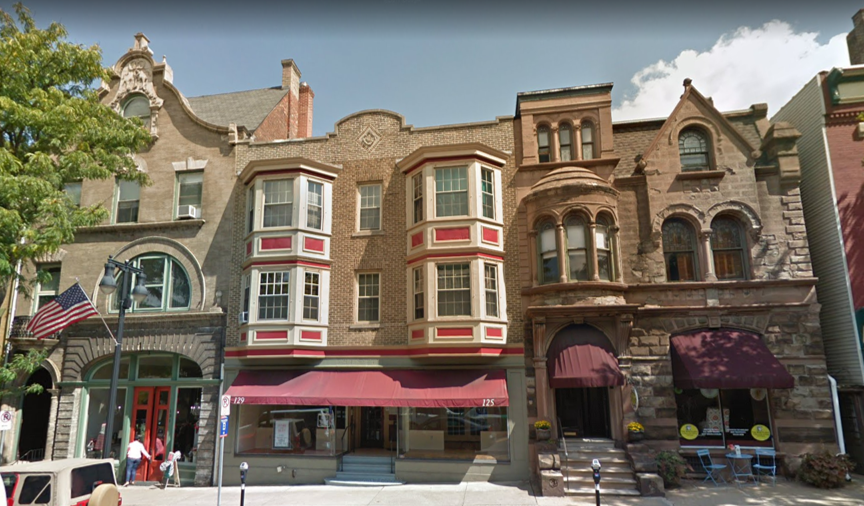
125 North 3rd Street, Easton, Pennsylvania, home of Lee and Abraham Goldstein in the early 1940s.
Drafted
On November 15th, 1943, a 36 year-old, 5'8", 185 lbs. Abraham Goldstein received his letter to report for induction. Between November and May, Abraham trained in several different training facilities including Camp Blanding, Georgia and Fort Meade, Maryland. He was assigned to the 115th Infantry Regiment, of the 29th Infantry Division.
On May 3rd, 1944, Abraham Goldstein, the son of Russian immigrants who'd fled the pogroms of the early 20th century, boarded a ship and sailed for England, leaving behind his beautiful wife of 11 years, his parents, brother and sisters, his friends, his business, and everything he'd ever known. Training in England was short-lived because within less than a month of his arrival in Europe, Abraham boarded another ship, this time his destination was Omaha Beach, Normandy, France. His objective: liberate the French people from German occupation. He'd only been serving for 7 months.
D-Day
It has been said that the men of the 115th didn't know much of the assault that they were going to carry out on D-Day. According to one veteran, Steven J. Poulos: "We knew nothing. Our orders were to go, and to do our best. We were going in, weather or not weather." In actual fact, the 115th IR wasn't supposed to attack Normandy until the day after D-Day. But in the midst of the D-Day battle on Omaha beach, the general in command of V Corps of the 29th Infantry Division, ordered that the 115th IR be sent in to support the 116th, who'd been getting ripped to shreds since the invasion began at 0630.
The 115th missed its landing zone by approximately 1,000 yards, and this put them in a position where their casualties were relatively low, compared to those of the 116th IR. Though he survived D-Day, Abraham received several wounds and was shipped back to England to recuperate. By June 22nd, he was back on French soil and fighting with the 29th Division. The orders his unit received were to take the city of Saint-Lô, a strategic strong point in Normandy. If Saint-Lô wasn't taken immediately, the whole allied offensive was at risk of being pushed back to the English Channel, creating an even worse situation than the British had encountered at Dunkirk.
The Battle for Saint-Lô
Taking Saint-Lô is remembered in American military history for several infamous reasons, notably the grueling "Hedgerow Fighting," and also the immense casualties suffered by the 29th Infantry Division. To put things into context, it is a seven-hour walk from Omaha Beach to Saint-Lô. The Battle of Saint-Lô began on July 7th. It took the soldiers of the 29th two weeks of the most brutal fighting imaginable, before they secured the town on July 19th. When the battle finished, the 29th Division counted 3,706 souls lost, the worst loss of life in the Blue and Gray's entire history.
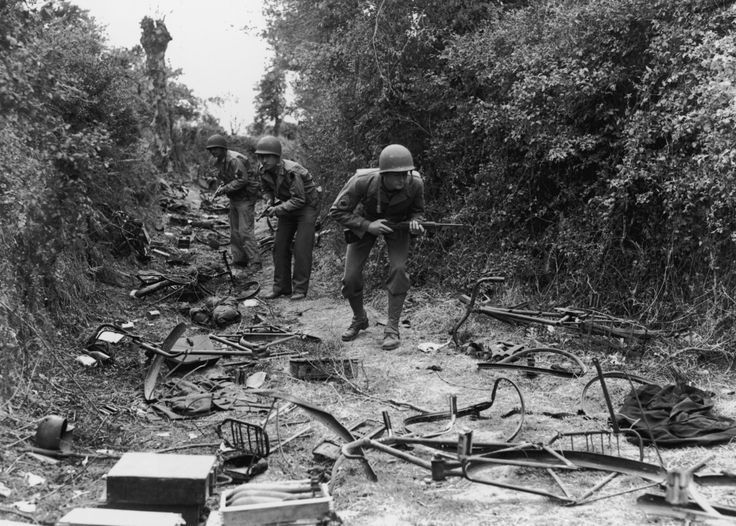
American soldiers carefully making their way through the dangerous hedgerows near Saint-Lô.
During the days of the 15th and 16th of July, after nearly a month of grueling hedgerow combat, Abraham, alongside his comrades of the 29th, tenaciously fought to secure a strong-point known as the Martinville Ridge. It had an advantageous position, since it was on one side of Saint-Lô, while the 116th Infantry Regiment was set up on the other side of the town, thus creating a spearhead shape to take the town Saint-Lô. On July 17th, Abraham's unit made some good progress, but at around 1600, German mortar teams, holed up inside Saint-Lô, rained shells down on the Americans who were dug in, in the fields surrounding the town. This mortar barrage caused many casualties within Abraham's 2nd Battalion. The After Action Report states the following: While waiting there [Martinville Ridge] during an ally air strike near la Madeleine, the [2nd] battalion was hit by an extremely heavy mortar concentration. A shortage of medical corpsmen, which existed all along the St-Lo front, was keenly felt in this sector, where wounded could not be properly cared for that evening. I do not know exactly when Abraham was wounded, but it is almost certain that he was hit during this mortar barrage.
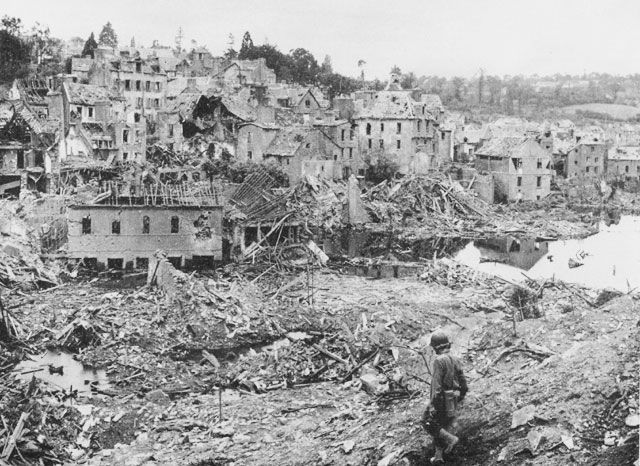
The remnants of the city of Saint-Lô, dubbed "The City Of Ruins" by Irish author Samuel Beckett, after its capture by American soldiers in July 1944.
The 29th Division's Morning Report of July 18th, records Abraham as "moving from duty on the front line to the hospital"; his status is noted as "LWA" (Lightly Wounded in Action) on the 17th. In the Morning Report of July 19th, Abraham's status changes from "LWA" at the hospital, to "DOW," signifying that he had Died of Wounds on same day he received his wounds. On the 17th of July, 1944, the 37 year-old Private from Allentown, Pennyslvania, Abraham Goldstien of the 115th Infantry Regiment, 29th Infantry Division, left this earth. The same day Abraham's death was officially recorded in the Morning Report, the 29th Division secured to the town of Saint-Lô.

Abraham rests in Plot H, Row 1, Grave 24 at the Normandy American Cemetery and Memorial in Colleville-sur-Mer, France. He was survived by his whole family.
Abraham's brother, Sanford, survived the war and even reenlisted in 1950 in the Army Air Force. All of Abraham's sisters married. As for his father Isaac, he lived until 1955. At the age of 74, he died suddenly in his daughter Mollie's home in Allentown. His death was attributed to a heart condition. Abraham's widow, Lee, crushed by the loss of her husband to whom she'd been married for 11 years, remarried in 1950 and moved to New York City. Lee went on to live a long life. On November 18th, 2001, at 90 years old, she was finally reunited with her long lost love, Abraham Goldstein.
How Abraham's story speaks for so many others
n°33833739. That was Abraham's service number. In the Normandy American Cemetery and Memorial each soldier's service number is chiseled into the bottom of the back of his marker. If that number starts with a 3, it means he was conscripted, or "drafted." Therefore, within a second, it is possible to tell whether or not the man enlisted of his own volition or was drafted into service. Or, in other words, if he voluntarily put his life, his past and future, his laughs, his ideas, his passions and family, even his identity, aside and decided to go and fight for the liberty of another continent, or if he was inducted by force into service, which could eventually be his death sentence.
It is simply devastating, heart-crushing and infuriating to walk the endless rows of markers in the Normandy American Cemetery and read the service numbers of the men resting for eternity there. I've done it for years and I guarantee that if you do the same, more often than not, you will come across a marker with a service number starting with a 3. I am not minimizing their sacrifice, if anything, I am stating that what they did was completely heroic. Did they have a choice? No. But are they lying there in French soil, forever young and sacrificed for a continent that most of their ancestors fled only one or two generations before? Absolutely.
To me, Abraham's story is a tragic story of a middle-aged, long-married man, who answered his call to service. Within 8 months of answering that call, he was gone, his life sacrificed for the liberty of the world. To me his story is also one of inspiration, because of his courage, his patriotism and because he fought side-by-side with other American heroes to liberate Europe from tyranny. He did this all in the right spirit and with a smile on his face. I have only respect and honor for him, and I offer this blog post as my way of saying thank you. Abraham, thank you. Your story will never be forgotten.
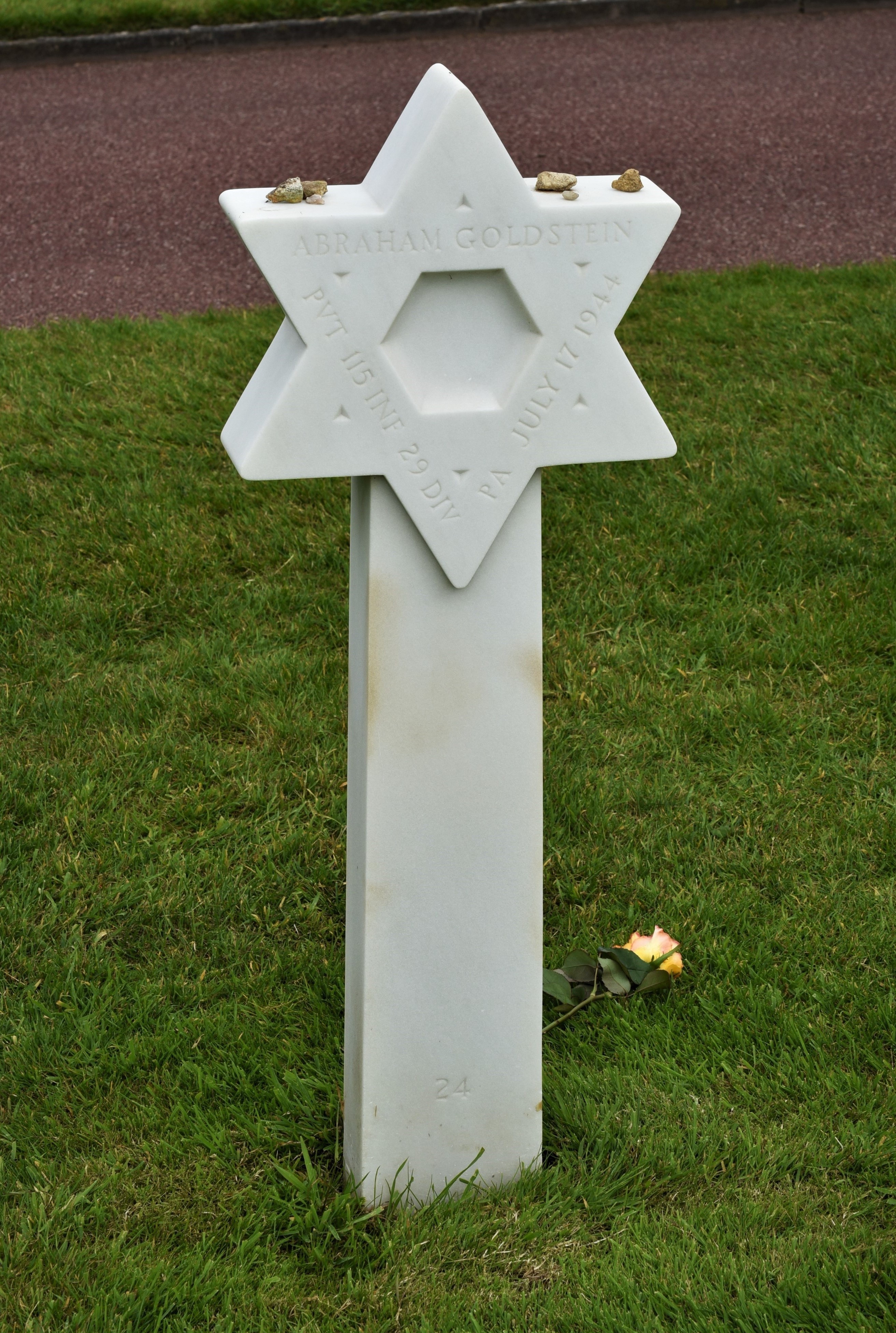
Abraham's eternal resting place, Plot H, Row 1 , grave 24, Normandy American Cemetery and Memorial.
I promise to remember.

